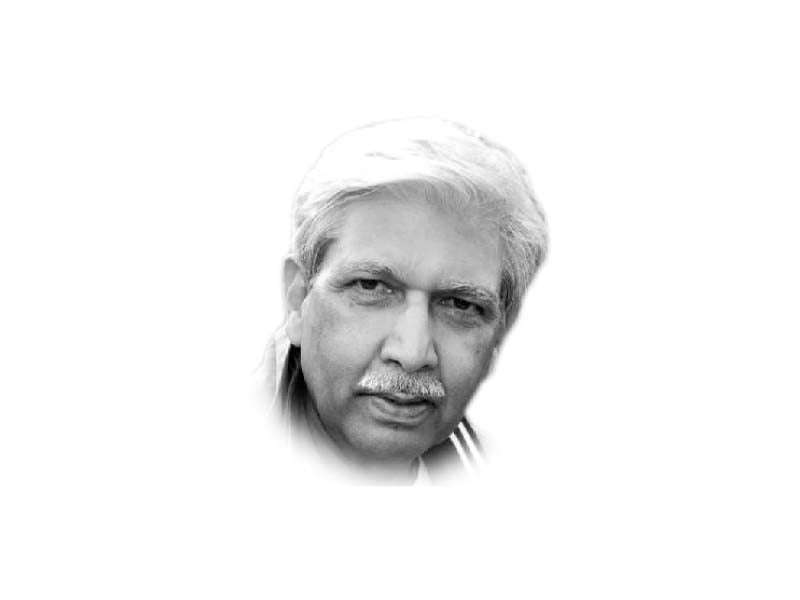
Let me transport you to the cockpit of a modern fighter aircraft which is joining combat. He may be alone or in the company of similar platforms in similar cockpits. He carries on his aircraft a mix of missiles, long and short range, possibly a targeting pod if the mission is so intended, jammers and electronic warfare suites which act as his protection from the enemy intending harm. In a formation each acts as the mother-ship and is autonomous in decision-making even when tied to a plan. The fluid dynamics of aerial combat in multi-bogey (many vs many) environment means that every moment calls for a new decision in fulfillment of the intended plan. The February 2019 skirmish exhibited these attributes.
How does that happen? Earlier the Radar controllers on ground and pilots communicated to build the air picture facilitating tactical decisions. Not now. The combat controller broadly monitors an engagement but will come in only when a threat emerges, otherwise pilots conduct their combat plan in silence. Located in the nose-cone of the aircraft is an onboard radar which lies at the heart of autonomous engagements. It looks into a cone of 120-150 degrees with requisite power to scan the area ahead for targets and the air situation up to ranges averaging 150-200 miles — this is a measure of the KWs power in electromagnetic energy generated by the radar in the nose cone. Extend 150 degrees at 150 miles and see the airspace it covers. It is immense. Imagine the data being triggered by this one radar. Each formation member generates similar quantum of data corresponding to his own scanned airspace.
The centre-piece of a modern fighter’s cockpit are three glass displays of 8x10 inches each which act as the control panel. At least one is dedicated to the Radar which displays the air picture in recognisable symbols identifying potential targets and their flight parameters. There is a perpetual updation of the picture as each aircraft, target or own, moves or turns or begins a tactical manoeuvre. The data thus is not only enormous it is constantly dynamic. Cumulatively it becomes a data-bank impossible to sift for the pilot. This is when onboard computer-processors come handy. Sometime pilots import or export data to each other or with the AEW&C platform to complement the air picture for a full view and to wholesomely plan their engagement even as they close on the enemy aircraft at top speeds. Ideally weapons must be delivered and the enemy destroyed at ranges beyond visual or barely within visual. That’s the aim though it may not always turn out that way. It is critical though to enter combat with a clearly stated plan. This is done without verbal communication through the shared data screens.
Modern fighters will have two to three such onboard computers each with distinct responsibility and function which also enable redundancy for more critical operations and aircraft safety if one were to go down. The radar is not the only source generating data; the electronic suite too is constantly receiving information and displaying that to the pilot of what threat could be of concern. That too marries into the total data. All weapons are slaved to the radar and are in constant communication while homing their seekers on the threat and calculating their optimum attack profiles to the target were the pilot to authorise release of one.
This is when the Fire Control System or the onboard computer takes over: it prioritises the threat, identifies the most optimal firing solution and lets the pilot do the rest. Pilot’s responsibility is to grasp the air situation, plan his engagement based around the instant air situation and allocate responsibilities and targets for others if he happens to be in command of the formation, and execute the plan fulfilling his responsibility. The plan must be in place before he enters combat even if it remains a beyond-visual-range engagement. That itself will consume all his attention and focus. Information in the electromagnetic spectrum travels at the speed of light and he needs his mind to work as fast to keep pace with constantly developing air situation, evaluating his plan and executing it.
This is what digitisation and integration has done to combat and cumulatively to war. The world of ones and zeroes creates a common language in a source coded algorithm that enables synergy and perfection in the solutions to the manifest situations of a dynamic multiple-axes combat. At the same time the pilot is being helped with a fully integrated, autonomously prioritised, optimally proposed and efficiently drawn geometry that he can depend on in a multi-bogey, many vs many, combat. An analog signal could have been easily flooded by adversary’s countermeasures making the processor less efficient as a consequence, showing targets at 60 miles range than 100 miles. But when you digitise the systems and its components, integration and synergetic efficiency are perfect — such is the beauty of linking all sensors and platforms on common language communication links. The response options and the depictions are instantaneous. It is also fail-safe against external disruption.
Modern fighters have more computers, highly powerful, for more functions. Some are simply meant to fly the aircraft; others manage the electronic warfare suites and countermeasures. These aircraft have dispensed with manual flight controls replacing cables and pulleys with electronic signals which transmit throughout the aircraft to move intended surfaces and control systems. A Flight Control Computer is one such processing facility. A transducer measures the force applied by the pilot on a fixed control stick — actually it moves by one-sixteenth of an inch — converts that into electric signal in which electrons fly at the speed of light to move the surface by the angle desired by the pilot in an instant. This has revolutionised manouvreability and given the pilot nose authority — the ability to point towards a target and unleash a weapon on him in an instant bringing efficiency to the art of killing in air. A superb pilot in command of a perfect detection and targeting system on an agile weapons platform makes for a perfect killing machine.
During all this there is a combat plan being executed in a formation and a group that has all players singing from the same page. That is the beauty and the challenge of modern combat and its platforms. It entails each player to be equally skilled, equally deft and equally nimble with their minds, fingers and their brains. Muscle power is as critical as is brain power for both will need to work under highest physical and mental load. He will need a lightning-speed decision process supported by the systems but must be able to cut the clutter and only home onto what is urgent and crucial. What will Artificial Intelligence do to this process? Make decisions and trigger a firing solution even when the pilot is undertaking other tasks needing his intervention? This is how technology has changed combat and revolutionised war. Digitisation underwrites the Revolution in Military Affairs. It has changed how wars must be fought. We will take that up the next time. Hope you enjoyed the ride.
Published in The Express Tribune, January 3rd, 2021.
Like Opinion & Editorial on Facebook, follow @ETOpEd on Twitter to receive all updates on all our daily pieces.




1732263441-0/BeFunky-collage-(81)1732263441-0-165x106.webp)
1732263755-0/musk-(3)1732263755-0-165x106.webp)







COMMENTS
Comments are moderated and generally will be posted if they are on-topic and not abusive.
For more information, please see our Comments FAQ